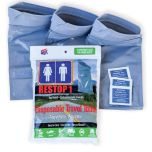MarS ATL-15 Parachute
MarS ATL-15 Parachute
General Description
MarS ATL-15 Back Parachute - are well known to glider pilots and sports planes around the world. For our customers is prepared a wide color collection of these proven emergency parachutes. There are two types of back emergency parachutes and one type of seated.
The parachutes meet the requirements of ETSO C23d and SAE AS 8015B.
The ATL-15 Emergency Parachutes have received ETSO approval EASA.210.10057243 Rev. 1 from EASA. A, issued April 13, 2016
Please allow approximately 4 -8 weeks for delivery of your custom MarS ATL–15 Back Parachute. Call to verify the current lead time.
If you have any questions or need help ordering your MarS Parachute please call (208) 994-4110 or email [email protected].


Scope of Parachute
Pilot Chute – 1 pc.
Bridle – 1 pc.
Canopy – 1 pc.
Harness – 1 pc.
Container – 1 pc.
Ripcord – 1 pc.
Back padding – 1 pc.
Portable bag – 1 pc.


Color and Hardware Options
















